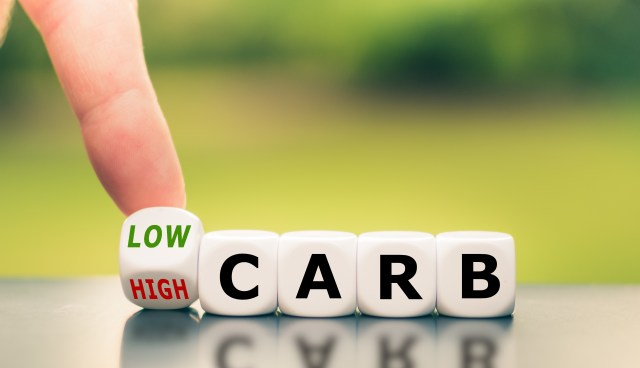
A beginner’s guide to starting a low carb diet.
Ready to turn over a new leaf? Fall is the perfect time to kickstart your low carb lifestyle. Using our top tips for success, this beginner’s guide has everything you need to navigate your low carb journey.
A Beginner’s Guide to Low Carb Living
Ready to cut back on carbs? That’s the secret to using fat for fuel instead of sugar. This may mean no more blood sugar rollercoasters of highs and lows, while meeting your weight goals. Whether you’re trying to lose weight, improve your health, or get the best out of (or move on from) weight loss medications, a low carb lifestyle might be the way to go.
Here’s how to get started:
- Knowledge is power. Do your homework before starting and learn the basics of a low carb diet, plus 10 reasons why Atkins may work for you. Discover what foods are low, moderate or high in carbs before you start. You can use Atkins’ Carb Counter or download the free Atkins app.
- Set goals. Picture where you want to be in the future. Having a clear goal will help you stay committed.
- Pick your plan. There are three Atkins plans: Atkins 20â, Atkins 40â and Atkins 100TM. Each has a different level of Net Carbs that you consume daily. You can pick your plan based on what best fits your lifestyle and specific goals. Remember, this isn’t one-size-fits-all. It takes time to determine your carb tolerance, ideal protein and fat intake, and which foods make you feel your best.
- Purge your pantry. Now that you have a plan, start with a clean slate by removing temptations and high-carb foods from your kitchen.
- Master your meal plans. A bit of planning is your secret weapon. Check out Atkins’ low carb recipes and make a list of your weekly meals and snacks. Next, hit the grocery store to stock your kitchen with all the foods you need for your low carb lifestyle.
- Stay hydrated. According to the Centers for Disease Control (CDC), dehydration may cause blood sugar spikes. Keep a refillable water bottle on hand, sip from it frequently and refill it as soon as it’s empty.
- Sugars are sneaky. If a food has 5 grams or more of total sugars or 5 grams or more of added sugars, steer clear. Bread, cereals and pasta can be Hidden Sugars, while added sugars are also lurking in breakfast foods like packaged oatmeal, cereal, pancakes, muffins, waffles, jams and jellies, as well as the typical sources like cookies, candy, and other snacks.
- Focus on quality fats. The right kind of fats can help you feel full and satisfied. They provide a stable energy source and bring out the richness and flavor in dishes. Aim to get quality fats from foods like avocado, olive oil, nuts, seeds and fatty fish.
- Protein is key. When you lose weight, your body can turn to your muscles for energy. Eating optimal amounts of protein, in this case, two to four 4- to 6-ounce servings daily, helps protect and maintain muscle mass. Protein also helps keep your hunger at bay, plus you burn more calories digesting protein than carbohydrates, which may give your metabolism a boost.
- Fill up with fiber. Go with fiber-rich sources, such as nutrient-rich veggies and low-glycemic fruits, which can aid digestion, fill you up and slow the absorption of food, leading to a more gradual rise in blood sugar levels. These benefits all work together for optimal weight loss and weight maintenance.
- Get moving. Exercise boosts the metabolic benefits of a low carb lifestyle. Whether it’s a brisk walk in the park or an intense strength-training session in the gym, you’ll reap the benefits.
- Transition gradually. If drastically cutting your carb intake sounds hard to maintain, start with Atkins 100. Once you get used to this way of eating, you can transition to Atkins 40 or 20 if you want faster results.
- Seek support. Join a group, like the Atkins’ community, chat with fellow low carbers online or share your journey with friends and family.
- Be patient. Low carb living is a journey, not a destination. Embrace the process and celebrate every step of the way, no matter how big or small.
